Are you sick to death of slow internet speeds ruining your RV experience? Have you been frustrated by the limited service area of major 4G cellular internet networks? If so, then you might rejoice to hear that Space X’s Starlink internet has been upgraded and is ready to bring RVers the blazing fast internet speeds they need to enjoy life on the road.
Starlink is the brainchild of Elon Musk and Space X. It is a constellation of satellites that can be used to provide fast, reliable satellite internet access in over 33 countries. This includes most of the United States, Mexico, most of Canada, Europe, Australia, and New Zealand.
Starlink’s performance speed means you can stream all your favorite shows, share videos, and connect with loved ones with perfectly clear video calls friends. All from the comfort of your RV. Though not everything about Starlink is perfect, and like any new product coming to market, there are some important details to consider when determining if it’s right for you.
Everything RV Owners Need to Know About Starlink Satellite Internet
There are a few factors to consider about Starlink before you sign on the dotted line to add it to your RV. Considering the competitive rise of 5G and what the future holds, we decided to download some important details about Starlink to help you decide if it’s the ideal service to pair with your RV experience.
1. Starlink’s RV Compatibility
You could argue that Starlink isn’t quite ready to take over as the primary internet service provider for the roaming RV community. As you continue to move with your RV, the service quality can vary, especially in the mid-Atlantic states, which might put you on a “Wait List” during peak times.
2. Starlink’s Power Requirements
To operate correctly, the Starlink hardware needs a constant power source to keep the 100W dish powered up. It isn’t always guaranteed to work without sufficient power, which might not make it the ideal choice for RVers who want to boondock off the grid, running on minimal power.
Ultimately, Starlink performs best when you have a static location and access to constant power. This makes it a better choice for a destination camper or a seasonal camper that spends all summer in one RV park.
3. Starlink’s Coverage In The United States
It’s important to note that Starlink is currently available in parts of the United States and Canada between 44th and 53rd degrees of latitude, which isn’t complete coverage of the lower 48.
Currently, the coverage area for Starlink is arguably on par with the 5G network coverage offered by the top cell services. Though both networks are currently expanding rapidly.
Regional areas also don’t have clear access due to topography or a lack of network coverage. Many of these areas are called the “Wait List,” where internet performance can be slowed during peak times or in densely populated areas.
These waitlist areas can experience slowed performance during peak times. This can reduce your network performance from download speeds by 90% and upload speeds in half. Typical waitlist speed performance can dip as low as 5Mbps to 100Mbps in high usage times in waitlist zones.
4. Starlink’s Clearance Concerns
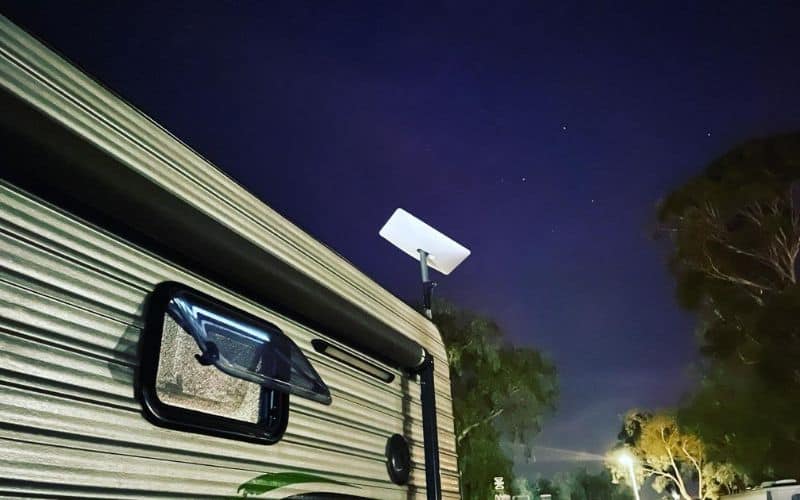
Just like if you have satellite TV in your RV, you need to be mindful of the location of trees and other overhead obstructions. Starlink’s clarity relies on a clear line of site.
This might be a non-factor if you are in the desert or you frequently camp in the mountains with wide open skies. Starlink might be just as frustrating as 4G cellular internet if you like to camp in heavily forested areas.
However, Starlink is still a work in progress. As time goes on, the number of satellites in orbit is going to continue to increase. This will make for better signal strength, reliability, and coverage.
5. Starlink’s Cost
Starlink costs $110 per month. There is also a $599 one-time equipment fee. You can have it installed in your home and in your RV. Though you will need to have the equipment installed in both locations.
6. Does Starlink Have Data Caps?
The good news is that Starlink doesn’t have any data caps, which is something that gives it a big leg up over even the newest 5G cellular internet services. Many cellular services have data caps built into even their so-called “Unlimited” data services, anywhere from 50 GB to 300 GB of data per month.
How Fast Is Starlink Internet
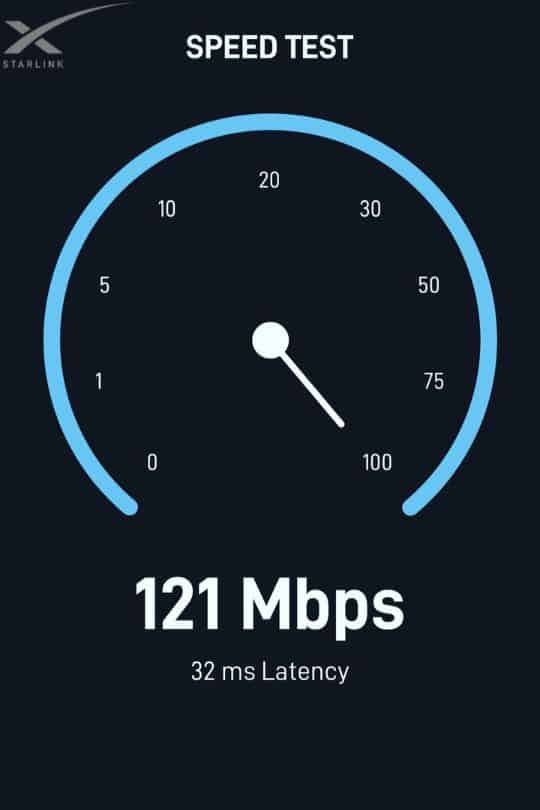
Starlink internet speeds can vary from download speeds of 50 to 250 Mbps and upload speeds of 10 to 20 Mbps. Though these stats could be lower in areas of heavy congestion. Typical waitlist speed performance can dip as low as 5Mbps to 100Mbps during peak times of high usage in waitlist zones.
How Does Starlink Compare to 5G Cellular Internet?
Real-world Starlink speeds are slightly faster and more reliable than the best 5G Cellular services. Especially if you are traveling in a Western state. However, 5G is lower in price and has better service coverage in the mid-Atlantic states.
You can also take the same 5G hotspot from home with you, so long as you can keep it powered up all the time in your RV. The 5G cellular internet service cost also tends to be lower than Starklink’s monthly service, and you can finance the hotspot to break it up into payments.
Starlink | 5G Cellular Internet | |
Equipment Cost | $599 | $339 to $699 |
Monthly Service Fee | $110 | $25 to $50 |
Financing | Not Available | Readily Available |
Speed | Free | Slightly Slower |
Coverage Area | Good in the west, modest in mid Atlantic | Good in the mid-Atlantic, poor to non-existent in much of the west. |
Reliability | Good, but can be slowed in congested areas | Good |
Expansion Potential | Slow | Fast |
Portability | Need two hardware setups | Uses one portable hot spot |
Data Caps | None | 50 to 300 GB per month, based on the provider. |
Starlink Vs 5G: Future of Mobile Internet for RVers
There’s no doubt about it Starlink is a major step up from the old days of 4G cellular service. Though it isn’t as perfect in the real world as much of the hype surrounding it. Especially when you consider how rapidly 5G has risen to compete with it.
Suppose you live or are going to be traveling in the west, away from any major cities. In that case, Starlink is a clear choice, as 5G networks simply haven’t expanded enough to offer reliable coverage in these areas. If you live or will frequently travel in the Mid-Atlantic states and the “Dirty South,” then the coverage area and the lower cost of 5G cellular internet might make more sense for your budget.
Just keep in mind that if you go with a 5G cellular service, even the so-called “Unlimited Plans” will still likely come with some type of data cap. If you are a heavy user chewing through more than 50 GB of data in a month, then Starlink will trump 5G, even in the Mid-Atlantic.

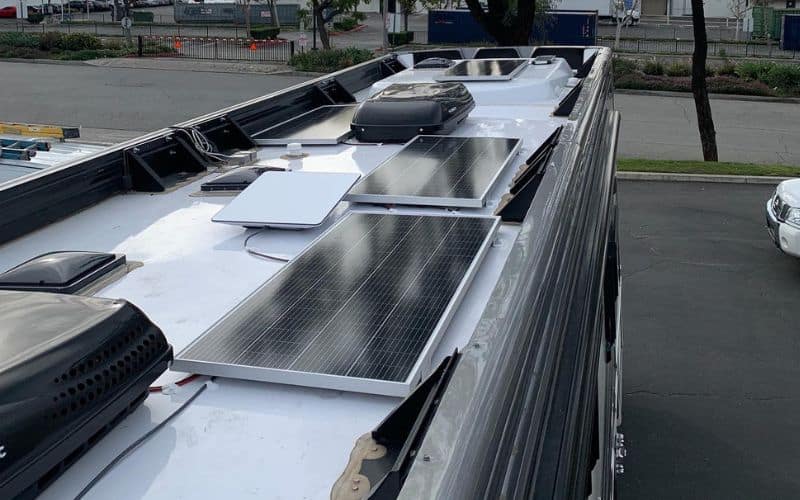
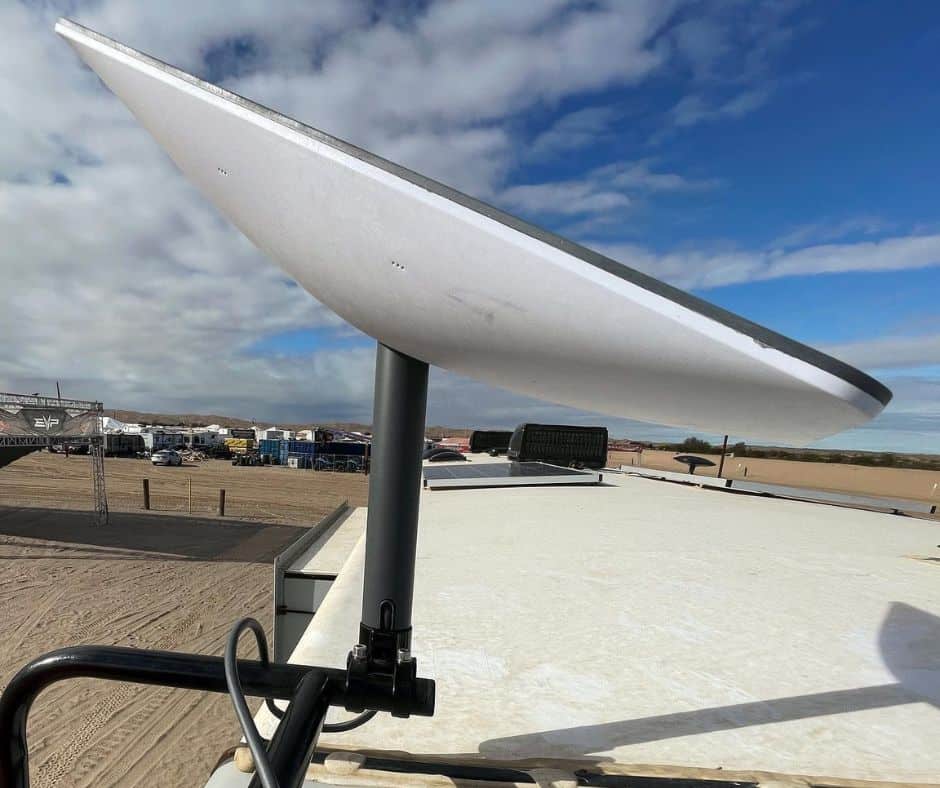


![5 Best RV Satellite Dishes and Antenna for RVs & Camping in [currentyear] 7 Best Portable RV Dish Antenna To Get Satellite Internet And TV On The Go](https://www.rvingknowhow.com/wp-content/uploads/2022/05/Best-Portable-RV-Dish-Antenna-To-Get-Satellite-Internet-And-TV-On-The-Go.jpg)
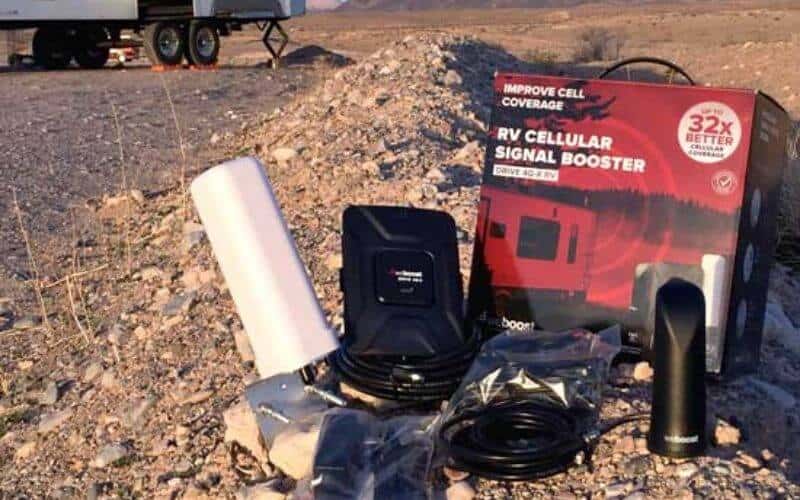
![RV Antenna: 6 Best TV Antenna for RVs, Camper & Travel Trailers in [currentyear] 9 6 Best RV TV Antenna Reviews & Buying Guide In 2020](https://www.rvingknowhow.com/wp-content/uploads/2019/12/6-Best-RV-TV-Antenna-Reviews-Buying-Guide-In-2020.png)